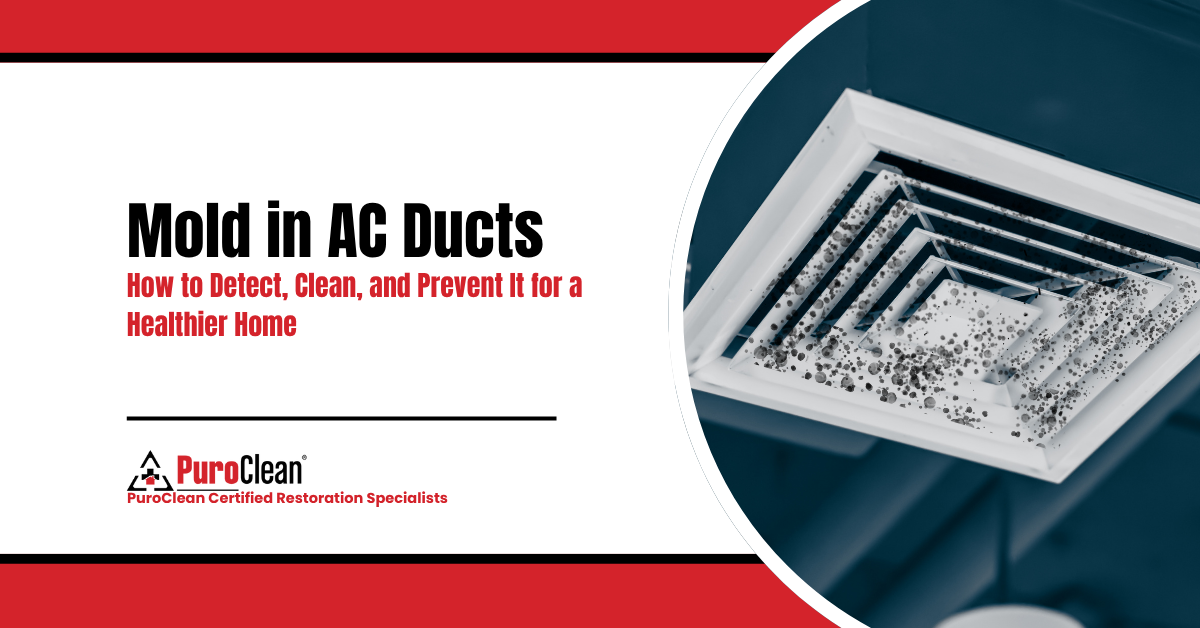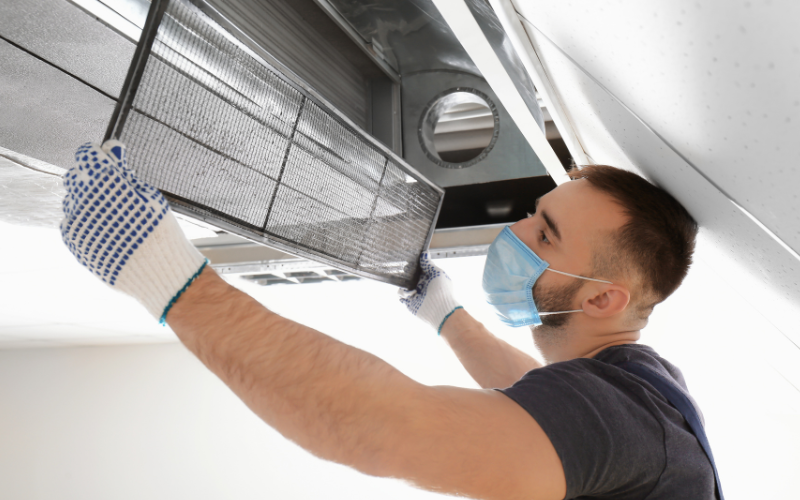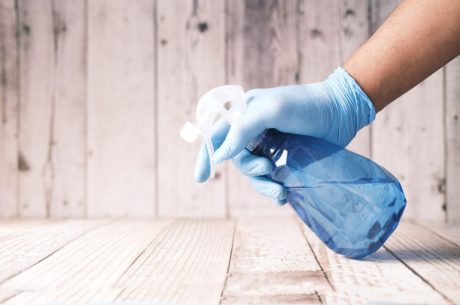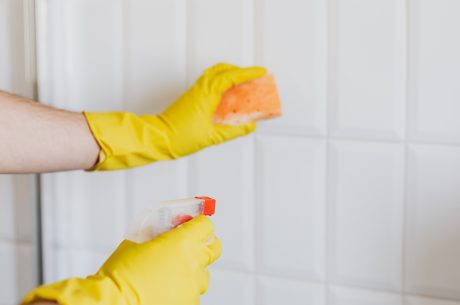
Key Takeaways
- Mold in AC ducts can affect indoor air quality and trigger allergies or respiratory issues.
- Common causes of mold include high humidity, clogged filters, poor ventilation, leaky ducts, and neglected HVAC maintenance.
- Warning signs of mold include musty odors, dark spots near vents, quick dust buildup, and increased allergy symptoms.
- Professional mold removal involves inspection, HEPA vacuuming, mold-killing solutions, scrubbing, and thorough drying of ducts.
- Prevent mold by regularly changing filters, controlling humidity, sealing leaks, ventilating damp areas, and calling experts at the first sign of mold.
Mold in your AC ducts is more common than you might think, especially in warm and humid areas. When mold begins to grow inside air ducts, it can spread spores throughout your home every time the air conditioner runs. This can leave your house smelling musty and may even trigger allergies, respiratory issues, or other health problems for you and your family.
The good news is that with the right approach, like professional mold removal in Zephyrhills, you can control mold effectively and maintain cleaner indoor air. Knowing what causes mold, how to detect it, and the best ways to remove and prevent it will help keep your home and family safe. In this blog post, we’ll cover everything you need to know about mold in AC ducts.
5 Common Reasons Mold Grows in AC Ducts
Mold doesn’t just show up for no reason. It needs the right conditions to grow, and AC ducts often provide them. Because ducts are dark and can hold moisture, they become an easy spot for mold to spread. Knowing the common reasons mold grows in ducts can help you prevent it from turning into a bigger problem.
- High humidity – Moisture in the air provides the perfect breeding ground for mold inside ductwork.
- Clogged air filters – Dirty filters restrict airflow, which can trap moisture and allow mold to grow.
- Poor ventilation – Without proper airflow, dampness lingers inside ducts and encourages mold growth.
- Leaky ducts – Cracks or loose joints can let in humid air, creating condensation inside the ducts.
- Neglected maintenance – Skipping routine HVAC cleanings makes it easier for dust and moisture to build up, giving mold the conditions it needs.
Signs to Look for When Detecting Mold in Air Ducts
Catching mold early can save you a lot of trouble. Since air ducts are hidden, it’s not always easy to spot mold right away. However, there are some clear warning signs that can tell you if mold might be growing in your system. Paying attention to these signs will help you take action before the problem gets worse.
- Moisture or small water leaks are found near vents or the HVAC unit.
- A strong, musty smell comes out every time the AC is running.
- Dark or discolored spots appear around vents or inside ducts.
- Family members notice more allergy or asthma symptoms indoors.
- Dust builds up quickly, even after regular cleaning.
How Professionals Clean Mold from AC Ducts

Understanding how mold is cleaned from AC ducts can help you see why certified restoration experts’ help is so important. Mold spores can spread quickly, and the process requires special equipment and care. Here’s a simple overview of how professionals typically handle mold cleaning in ducts:
- Turn Off the HVAC System
The first step is shutting down the HVAC system. This prevents mold spores from circulating through your home while the cleaning is happening. Turning off the power also ensures safety for both the technicians and your home during the process.
- Inspect the Ducts for Mold
Next, the ducts are carefully inspected. Professionals look at vents, registers, and hidden areas of the ductwork to see how much mold is present. If the mold is widespread or located in hard-to-reach places, their specialized tools allow them to spot and address it properly.
- Seal Off the Area
To keep mold spores from spreading to other parts of the house, technicians seal off the ducts and surrounding areas. They may use plastic covers over vents and create a contained work zone. Many companies also use negative air machines or air scrubbers to trap airborne particles and keep them from traveling into other rooms.
- Vacuum the Ducts
Using a HEPA vacuum, which is designed to capture even the smallest mold spores, professionals clean out dust, dirt, and loose debris. This step removes much of the buildup inside the ducts and prepares the system for deeper cleaning.
- Apply a Mold-Killing Solution
Once the ducts are cleared, a safe but powerful cleaning solution is applied directly inside the ductwork. These solutions are made specifically to kill mold and mildew and may also sanitize the system. The treatment is left to sit for a while to make sure it destroys any remaining spores.
- Scrub and Wipe Down the Ducts
After the cleaning solution has done its job, professionals scrub and wipe down the duct walls with specialized brushes or cloths. This step helps remove any stubborn spots of mold or dirt that might still be clinging to the surface.
- Replace or Clean the Filters
Air filters play a big role in keeping your HVAC system clean and mold-free. If the filters are dirty or clogged, they are replaced or thoroughly cleaned. Fresh filters improve airflow and reduce the chances of mold growing again inside the ducts.
- Dry the Ducts Completely
Finally, the ducts are dried out completely. Moisture is one of the main reasons mold grows in the first place, so professionals often use dehumidifiers or air movers to make sure there’s no dampness left behind. A dry system is much less likely to allow mold to return.
Effective Ways to Prevent Mold in Air Ducts
Preventing mold in AC ducts is much easier than dealing with a major cleanup later. Taking proactive steps not only keeps your indoor air cleaner but also protects your home and family from potential health issues. Below are some simple and effective measures you can take to keep your ducts mold-free:
- Contact professional mold removal specialists at the first sign of mold so it can be handled safely and thoroughly.
- Change or clean air filters often to keep airflow clean and strong.
- Control indoor humidity and try to keep it under 50%.
- Schedule regular HVAC inspections and maintenance to catch problems early.
- Seal any leaks in ductwork to stop humid air from entering.
- Use a dehumidifier in damp areas such as basements or laundry rooms.
- Ventilate bathrooms, kitchens, and laundry spaces to reduce moisture buildup.
Frequently Asked Questions
How much does it cost to remove mold from air ducts?
The cost to remove mold from air ducts typically ranges from $600 to $2,000. The exact price depends on the size of your duct system, the level of mold contamination, and how complex the cleaning process is.
Will cleaning the AC ducts completely get rid of mold?
A proper cleaning with mold-killing solutions and full drying can remove mold effectively. But if problems like leaks, poor ventilation, or high moisture continue, mold may come back. A restoration specialist can help find and fix these issues to stop future growth.
How can I tell if there’s mold in my AC ducts?
Look for signs like a musty smell from the vents, dark or fuzzy spots near duct openings, or more allergy and breathing issues among family members. If you notice these, it’s a good idea to have your ducts checked.
Can mold in air ducts affect my health?
Yes. Mold spores can circulate through the air, which causes symptoms like coughing, sneezing, headaches, and breathing difficulties. People with allergies, asthma, or weakened immune systems are particularly at risk.
Can mold in air ducts spread around the house?
Yes. When your AC or heater runs, it can push mold spores into every room. That’s why it’s important to handle mold in ducts quickly before it spreads further.
Need Help with Mold Removal in Zephyrhills? Call PuroClean Zephyrhills Now!
Mold in AC ducts is a serious concern that can significantly affect your indoor air quality and health. Knowing how to clean mold in AC ducts is essential for maintaining a healthy HVAC system. Prompt action, including proper cleaning, drying, and preventive measures, can help keep your home’s air clean and your HVAC system functioning efficiently.
For mold removal services, reach out to PuroClean Zephyrhills. Our experienced restoration specialists can help restore your home’s air quality and provide long-term solutions to prevent mold recurrence. Contact us today for more information!



